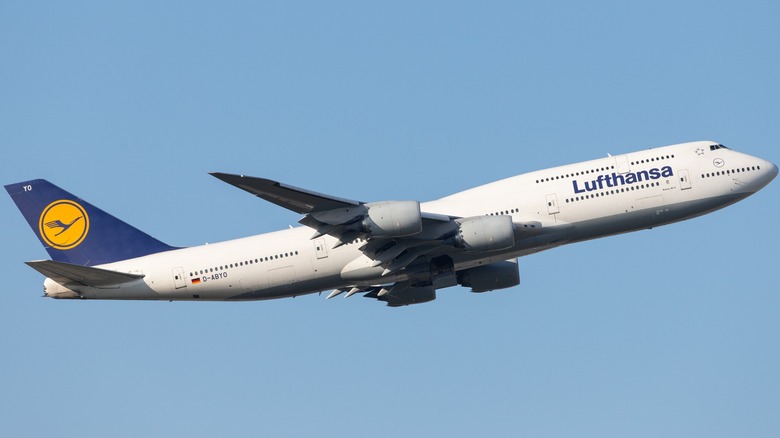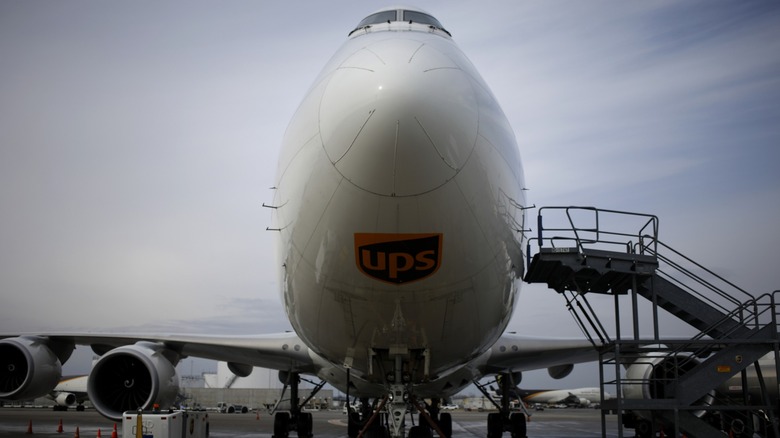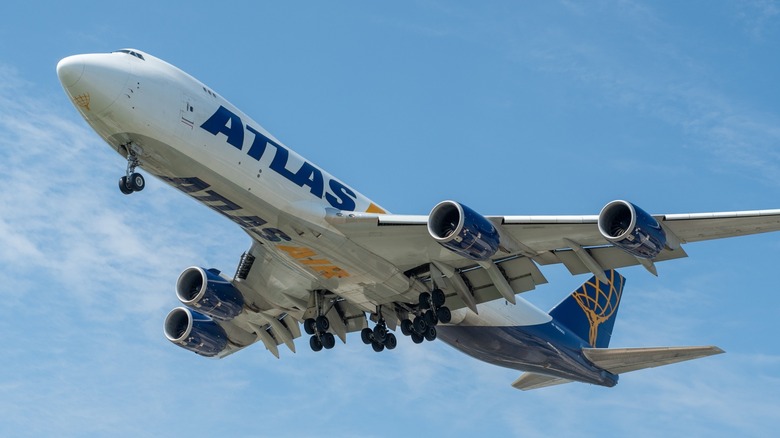Boeing's 747-8: Why It's Still The One Of The Best Jets In The Sky
If you asked a random person walking down the street to name an airplane made by Boeing, the odds are extremely high that the first response they can think of is the 747. It really rolls off the tongue nicely but, in the same vein, so does any Boeing sharing the same nomenclature. They could say 737, 777, 767, or 787, but they don't. Why? Because the 747 is a legend.
Known as the Queen of the Skies, the Boeing 747 has been an icon since its first flight in 1969. Boeing produced over 1,500 of them throughout its production run which came to an end with delivery of the final example in January 2023. Logging more than 118 million flight hours and nearly 23 million flight cycles, the 747 stands out as the first twin-aisle commercial aircraft in history. It's fast, huge, and has a monumental fuel range that made international travel more commonplace and affordable.
Throughout its production, the 747 continued to see technological evolution with the times, which kept it relevant the entire time. Let's take a look at why the 747-8, the newest version of this classic icon, is still one of the best jets in the sky.
Updated for modern air travel and efficiency
The 747-8 is the final version of the 747, serving as an updated version of the 747-400. While the 747-8 did get a bit bigger than the 747-400 — the 747-8 has 11.5 feet of extra wingspan, is 18 feet longer, and stands about four inches taller than its predecessor — the biggest advancements came in the form of technology.
Those upgrades include an overhaul of the cockpit that upgrades the screens to LCD from the 747-400's cathode-ray-tube displays. In addition, it has an electronic airport map showing taxiways, runways, and gates, an upgraded flight management computer, and an electronic checklist. It also adds a vertical situation display for pilots to see the plane's current and projected flight path.
The biggest advancement on the 747-8, though, is the improved jet engines. The 747-8 shares the GE GEnx engine found on the 787. They use composite fan blades and a composite fan case and have an impressively high bypass ratio. This means that they are a lot more fuel-efficient and have fan modules that are much easier to maintain.
Timeless capabilities
Despite the advancement of technology through time, updates to the 747 platform have kept it at the top of the food chain when it comes to capability across the board. Whether you're talking cargo capacity, passenger capacity, or speed, it sits near or at the top of the list.
The 747-8 is still the fastest passenger airliner in service with a top speed of Mach 0.9. At sea level, that's around 700 miles per hour. It has a service ceiling of 43,100 feet with an overall range of over 9,000 miles. Currently, the longest regularly scheduled 747-8 flight is from Seoul, South Korea, to Atlanta, Georgia with a distance of 7,152 miles and a total flight time of 15 hours and 40 minutes. The Boeing 747-8 can hold up to 605 passengers, with a typical layout holding a total of 467 passengers. When hauling cargo, the 747-8 is capable of carrying 293,000 pounds.
Despite its aging platform, the 747 is still competitive with longer-flying modern planes like the Airbus A350 and the Boeing 777, as airlines like Lufthansa, Air China, and Korean Air still service routes with 747s. In addition, Atlas Air, the company that got the last 747 ever built, uses them for both passenger and cargo routes. Despite being one of the oldest aircraft still in service today, the 747 is a phenomenally capable plane that we'll continue to see in the sky for years to come.


